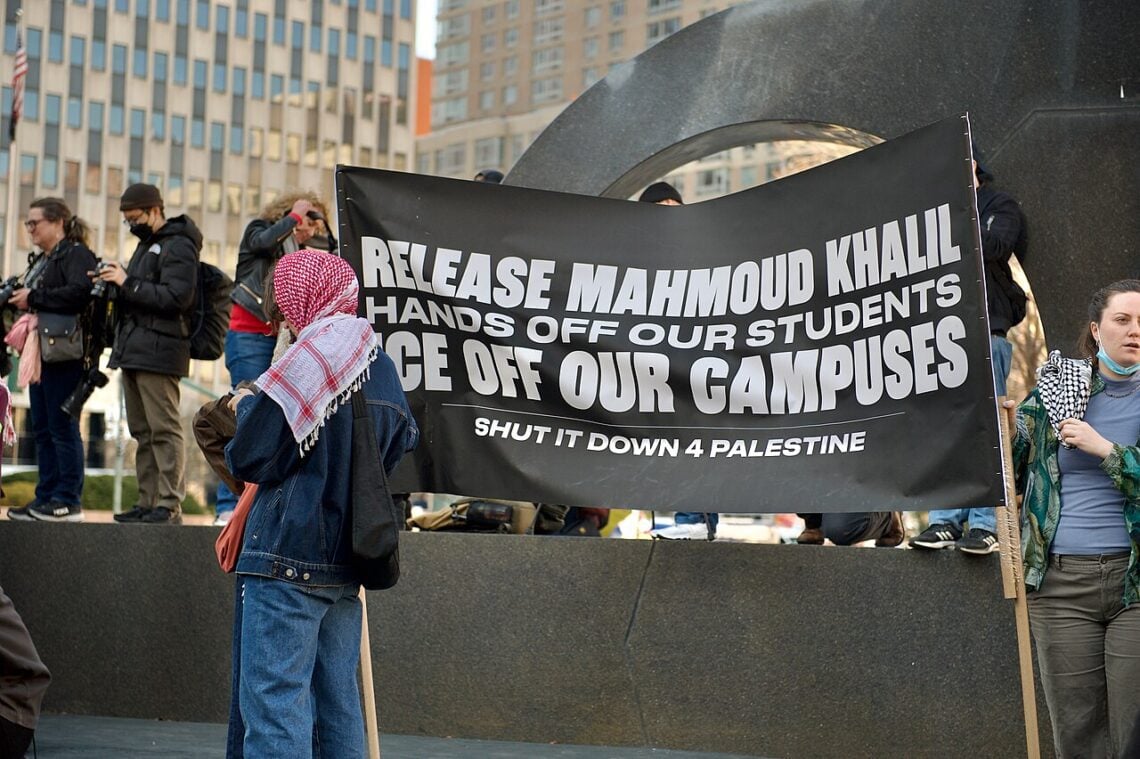
Editor: International students are excited to have been accepted at universities in the U.S. There’s only one problem–they can’t get student visas. Stephen Miller and the Trump administration have made it very clear: They’re not going after the “worst-of-the-worst.” In fact, they aren’t even targeting undocumented immigrants. ICE agents are hanging out at immigration courts so they can grab people who are following the law and attending their asylum hearings.
It’s extremely clear: They don’t want anyone who isn’t white, doesn’t speak perfect English—and who isn’t giving Trump millions of dollars—in this country.
They’re painting the border wall black to burn anyone who dares follow Lady Liberty’s torch to this country. They have military bases along the border. They even tried to take away birthright citizenship. Now they’re refusing to allow International students who have been accepted into American universities to attend.
(Watch Jim Acosta’s recent interview with Miles Taylor. Taylor listed all of the depraved things Trump wanted to do to people at the border during his first term and painting the wall black was one of them! A moat full of alligators and snakes was another. Taylor said they were able to talk Trump out of painting the wall black by telling him how much it would cost.)
Trump is destroying so many businesses and institutions by withholding funding, destroying their ability to attract customers/clients/students, or raising their costs with tariffs. I’d love to see CEOs, law firm partners, and university presidents out in the streets protesting.
Except in Michigan where they just made protesting in public streets illegal. Fascists gonna fascist I guess.
The Intercept
A prominent Indian journalist was notified by the Trump administration this week that his student visa to pursue a master’s program in the U.S. had been denied. The prospective student, Kaushik Raj, a journalist who has reported for international and Indian publications alike, was told in his rejection letter that the U.S. government felt he did not have enough ties to his home country.
Set to study data journalism at Columbia University’s graduate journalism school, Raj was incredulous. His entire family is in India, his reporting has been on India, and he had told the American consular officer during his interview that he intended to use the skills he learned at Columbia to report data-driven stories about rural India.
“I am being punished for my journalism, for my views,” he told The Intercept.
As the fall semester kicks off at universities across the U.S., students around the world are facing similar rejections, with many more stuck in visa application purgatory. The slow-rolling of applications and denials are leaving universities bracing for an unprecedented downturn in their international student intake.
Incoming students from diverse backgrounds, with plans for pursuing varied scholarship, spoke to The Intercept about a litany of problems under the Trump administration’s new student visa processes.
Many have had their applications rejected on grounds they can’t fathom; others have been waiting weeks for a decision on their applications. Foreign students granted admission by universities can’t get slots for visa interviews even as their academic programs get underway. Wait times for “administrative processing” of visa applications have stretched from days to weeks to more than a month.
For incoming students and their families, the situation is riddled with anxieties and uncertainties.
“The Trump administration has taken myriad actions since January that make it far more difficult for international students to come to the United States, and even if they’re here, for them to complete their studies,” said Elora Mukherjee, an expert on immigration law and director of the Immigrants’ Rights Clinic at Columbia Law School.
She cited the revocation of student visa statuses of more than 1,000 individuals in March and April, the social media vetting policy for visa applicants, and a travel ban imposed on citizens from several countries in June. For instance, she pointed out that due to Trump’s travel ban, Afghan women would find it virtually impossible to come to the U.S. for their higher education even if they were offered a full scholarship.
As a result, the U.S. could see 150,000 fewer international student arrivals this fall, according to an analysis published by NAFSA: Association of International Educators, a U.S.-based nonprofit that tracks international education. The study said that the drastic reduction in international students in the U.S. could result in nearly $7 billion in lost revenue.
While Raj believes his case was political, his story is among many examples of the Trump administration denying foreigners’ student visas as part of a wider crackdown on immigration.

